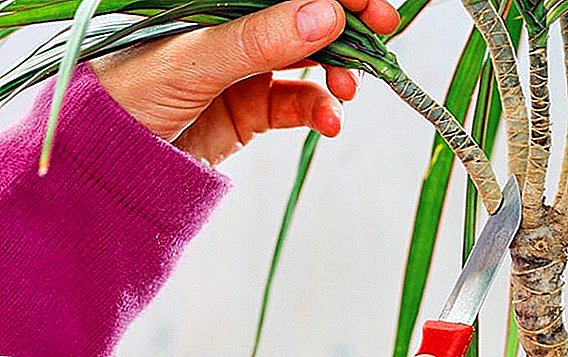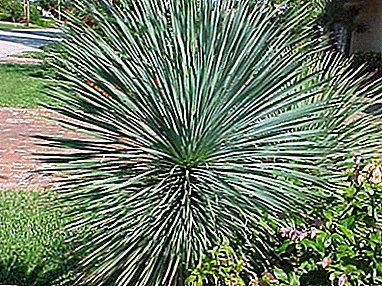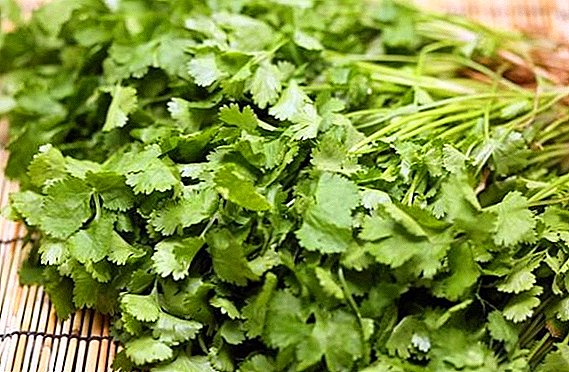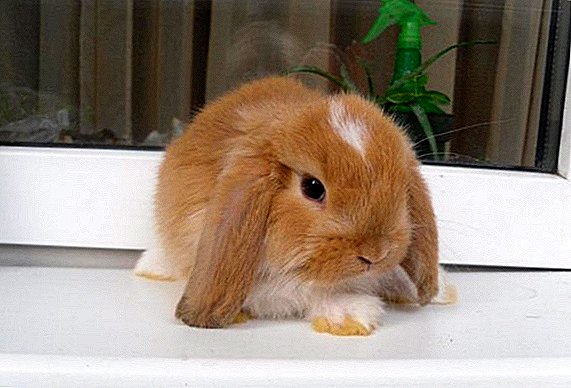 At all times, the red color was considered special. For some, he was mysterious and surrounded by secrets, but for others - just bright and mood-enhancing color. For this reason, red pets have always been very popular. In our article we will talk about red rabbits.
At all times, the red color was considered special. For some, he was mysterious and surrounded by secrets, but for others - just bright and mood-enhancing color. For this reason, red pets have always been very popular. In our article we will talk about red rabbits.
What is the peculiarity of red rabbits
The appearance of red color rabbits owe their English ancestors, which they crossed with wild hares. Among veterinarians there is an opinion that red rabbits live less than their relatives of other colors, but this is not scientifically proven. Perhaps the main feature of these rabbits is their "sunny" colors.
Learn all about breeding rabbits at home.
Red Rabbit Breeds
Representatives of the fiery color are found among many breeds; they are monophonic, with stripes, spots and various shades.
Burgundy
These are representatives of the meat breed, which is considered one of the best and has such characteristics:
- animal fur has a uniform, light brown with a red tint color, rarely found in nature, the wool is thick, tough and short;
- the head is decorated with small spoon-like ears;
- compact and strong body, well developed musculature of the hind legs, sacrum and lower back;
- females are very fertile (10-12 cubs in the litter), have 10 nursing nipples, which makes it possible to feed the babies, rabbits quickly gain weight (about 42 g per day);
- another important feature of the "Burgundians" is their strong immunity and resistance of young animals to intestinal diseases;
- have a good appetite, but are prone to obesity;
- weight ranges from 4.5 to 5.5 kg;
- live up to 10 years;
- The fur is very much appreciated because of its beautiful uniform color, it does not grow bald, so its products will last a long time.

When caring for "Burgundy" you must follow some rules:
- Maintain cleanliness, eliminate drafts, dampness and direct sunlight.
- The air temperature should correspond to + 10-20 ° С, and humidity - 50-70%, since rabbits do not tolerate high temperature and humidity.
- If rabbit kept in a warm room, they will bring offspring all year round.
- At three months of age, males are separated from females. In one cage, the males contain one by one, and the females - by 3-4 individuals.
- The diet should contain raw and boiled vegetables, green grass, and in winter - hay. Legumes and grains are needed for rapid growth. Fresh water should be constantly.
Important! A varied diet will provide pets with essential vitamins and minerals. But do not abuse vitamins, as their shortage is tolerated better than an overabundance.
Red ram
This is a breed of meat rabbits. They have such features:
- distinctive feature - hanging ears, reaching 50-70 cm in length;
- hook-nosed muzzle and drooping ears give resemblance to rams;
- up to 6 weeks of age in babies, the ears are erect, and then begin to sag;
- thick smooth red fur;
- thick, short, strong paws;
- weight reaches 3-4 kg, although sometimes there are instances weighing 8-10 kg;
- life expectancy - 7-8 years, but there were cases that with good care, they lived to be 13 years old.

Red-haired sheep are unpretentious in content and well adapted to various conditions, but their content should take into account the following:
- Like all eared, they are sensitive to cold and drafts, as well as to direct sunlight.
- Cages should be spacious so that the rabbits do not step on their ears.
- It is desirable to cover the floor with sawdust or shavings.
- Cleaning in the cells should be at least once a week.
- Regularly inspect and clean the ears (caring for them is the main problem in keeping lop-eared pets).
- There are no peculiarities in the diet, they are given compound feed, vegetables, grass or hay.
Did you know? In 2003, the Geronim rabbit (a breed of English sheep) was listed in the Guinness Book of Records as the owner of the longest ears, which are equal to 79.06 cm.
New Zealand
Rabbits of this breed are used to produce meat and skin products. They have such features:
- wide and short head tightly adjacent to the body;
- muscular body and well developed chest;
- short, pubescent on the pads;
- ears round at the ends, shaped like a scapula;
- variety of color: from yellow with red to red-brown;
- weight - about 5 kg, females slightly larger than males;
- they are distinguished by early ripeness and fast weight gain;
- females produce about 40 young rabbits per year;
- they are not kept for a long time, but are slaughtered at the age of 4-5 months;
- have dense and thick fur.

To get good meat and high-quality skin, you must follow the standard recommendations:
- Meals - 2 times a day. Various food (feed, cereal mixtures, vegetables, grass or hay). Do not overfeed or underfeed animals. At night, they consume about 70% of the food, so you should feed them more abundant in the evening.
- In winter, it can be contained in multi-tiered cages, and in summer it is advisable to use portable cages, exposing them to the grass (but not to the sun).
- Cold rabbits tolerate more easily than heat (optimal temperature - + 18-20 ° C).
- When breeding rabbits to get fur, you need to carefully care for their skin. Her combed, cut the tangles (if they appear). In the warm room animals can be bathed, but then make sure that the fur dries well.
Important! Many rabbits are susceptible to various diseases, so vaccination should be carried out on time. When buying new individuals in the first days they are isolated, so that in the event of their illness they do not infect the rest of the animals.
Rex
These animals are raised mainly for beautiful fur, but their meat is also tasty, so they are considered meat and fur rabbits.  These include several varieties that are combined by common qualities:
These include several varieties that are combined by common qualities:
- the red short hair of the Rex is very similar to beaver fur (often used to imitate expensive skins);
- have unusual short and curved whiskers;
- body weight - within 3-4 kg, graceful and thin skeleton;
- females have a small crochet;
- fecundity is low (3-4 bunnies in litter);
- poorly tolerate heat (the temperature at +25 ° C is already dangerous for them), but it feels great when it is freezing (even down to -30 ° C).
Read also about how many rabbits live on average.
Rex care is pretty simple, but you need to follow some rules:
- Twice a week to carry out cleaning of the cages (these animals are very clean and can be taught to use cat trays).
- Drafts and high humidity are contraindicated (optimal - 50%).
- The temperature of the content - + 15-25 ° C.
- To cover floors use medium chips (small ones can cause allergies).
- Aviaries are made of solid materials so that animals do not nibble them.
- Hay and grass should be in the feeders, so that animals do not trample them.
- The diet should be varied and include feed concentrates, cereal mixtures, grass, hay, fruits and vegetables.
Dwarf fox
The pet has a friendly and docile character. 
These representatives of the ornamental breed are the smallest rabbits (their weight is about 1.5 kg), besides that they have such features:
- long beautiful thick hair (from 3 to 7 cm);
- in color prevails red color;
- small torso, but quite strong;
- large head with small erect ears, neck almost invisible.
Permits stroking and caring for him. Quickly attached to people. With good care, on average lives about 7-8 years. Decorative breed rabbits require more attention and care than representatives of other breeds. The content of fox rabbits is as follows:
- The cage should be 70 cm long and at least 30 cm wide.
- For litter need to use sawdust.
- Place the cage in the shade, away from drafts, but with constant access to fresh air.
- Cleaning in the cage should be carried out at least 3 times a week, drinkers and trough thoroughly wash.
- For food use hay, compound feed, feed mixtures, rolled oats. Fresh water should always be in the drinking bowl.
- Wool requires constant and thorough care (combed out at least once a week and make sure that tarts are not formed).
- Once a month you need to trim the claws, it is better to do it in the cabin.
 It must be remembered that this "toy" animal is a living creature and needs constant care.
It must be remembered that this "toy" animal is a living creature and needs constant care.Angora
This is a group of breeds used for decorative purposes, as well as for producing Angora wool. They are united by such characteristics:
- the hair is longer (15-25 cm), thinner and softer than that of Fox Rabbit;
- weight ranges from 2 to 6 kg (depending on the type);
- life expectancy is from 5 to 7 years;
- the nose is flat, the faces are almost invisible because of the fur;
- hoisted strong and quite long, although they almost imperceptible.
Check out the breeds of black and white rabbits.
The complexity of the care is due to the long coat, and the rest of the content is practically the same as other breeds. To obtain high-quality wool and beautiful appearance of pets, you need to follow these rules:
- The cells must be very clean so that the fur does not get dirty and not tangled.
- Do not use shavings or sawdust for bedding so that they do not stick to the wool.
- Combing pets need at least once a week with a special brush.
- The fur over the eyes must be cut periodically so that it does not interfere with vision.
- The room in which the animals are kept must be well ventilated, the humidity should be low, temperature fluctuations should not be allowed.
- You need to constantly monitor that the animal's stomach is not clogged. Some farmers advise giving pets dandelions to remove hair plugs.
- Regularly should be cut fast-growing claws (2 times per month). This is done carefully so as not to hook on the blood vessels.
- Bathing for the Angorians is undesirable; it is better to wash the contaminated area with warm soapy water and dry it well.
- Hay must prevail in the diet in order to grind down teeth. In addition, give a grain and juicy food. Fluffies are very fond of carrots, beets and cabbage.
 The maintenance of the Angora rabbits is troublesome, but all the shortcomings fully compensate for their chic appearance, as well as their friendly and sociable character.
The maintenance of the Angora rabbits is troublesome, but all the shortcomings fully compensate for their chic appearance, as well as their friendly and sociable character.Did you know? Very few rabbits live up to 3 years in the wild. But among the pets have long-lived. For example, a rabbit from Scotland lived for 24 years and no one has yet broken his record.
What name can you think of a red rabbit
It may seem ridiculous to someone to call the rabbits by name, but in the rabbit farms this is taken very seriously. And if the pet will live with you for 5-10 years, then how to be without a name? Many are wondering if there are any rules when choosing a nickname for a pet.
Find out what nickname to come up with decorative rabbits.
In fact, there are no rules and everything depends on your imagination. But if you find it difficult to decide, we will give a few recommendations. Nicknames can be selected based on the following principles:
- features of appearance or color color;
- unusual traits or behaviors;
- can be called by month of birth.
 We hope that our article was interesting for you, and when you decide to have a rabbit, you will surely stop your choice on a cute red creature.
We hope that our article was interesting for you, and when you decide to have a rabbit, you will surely stop your choice on a cute red creature.











